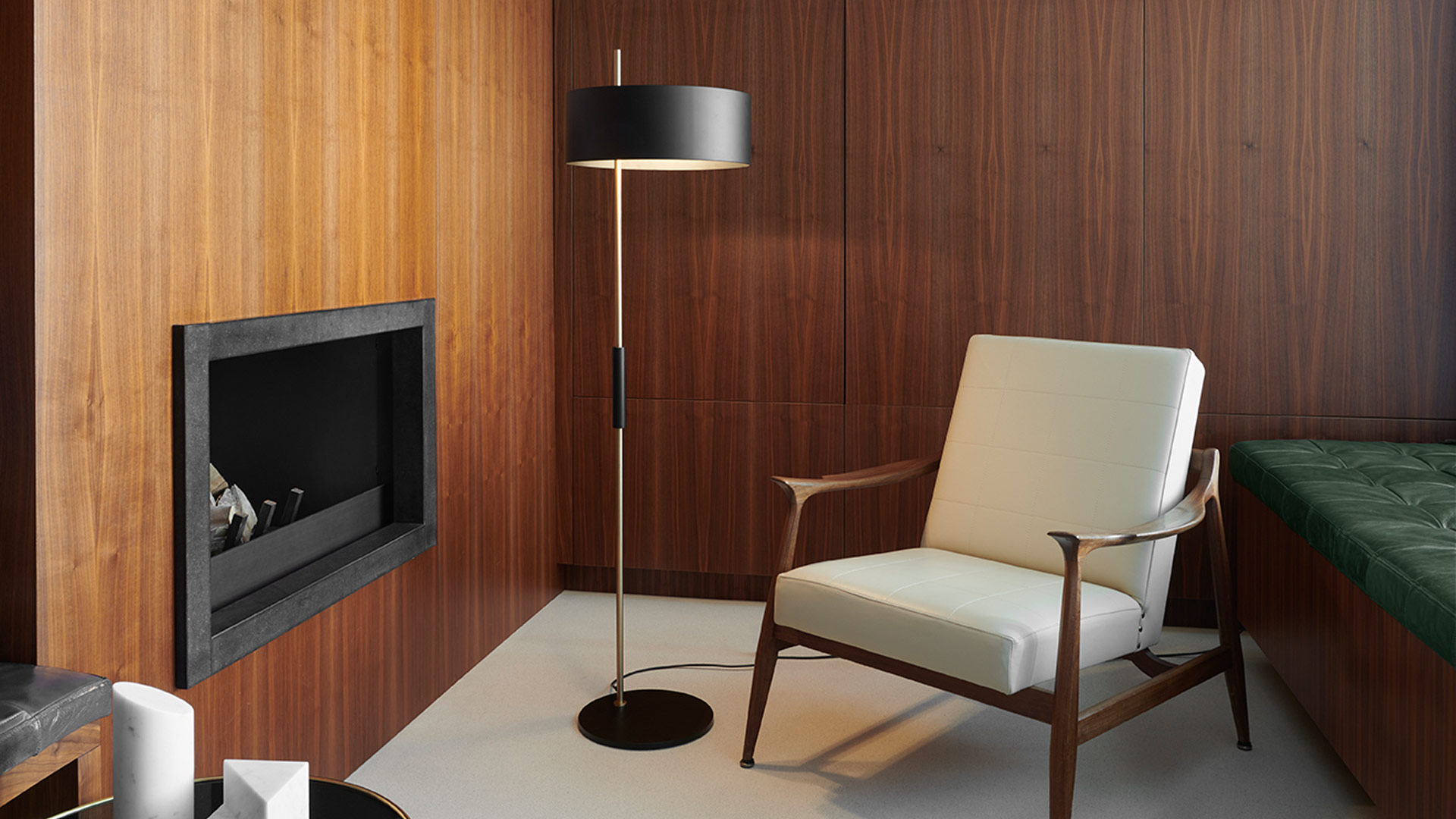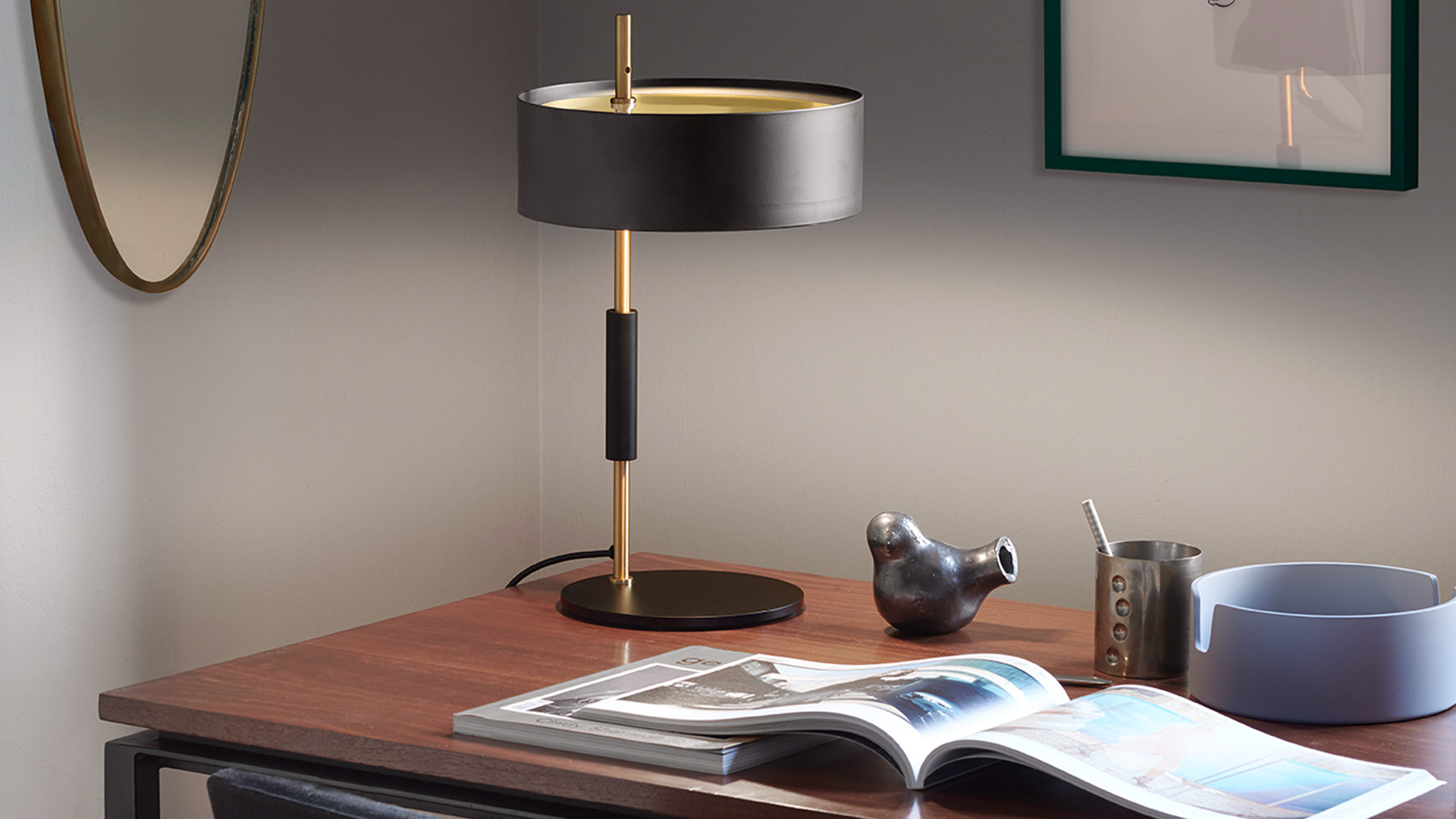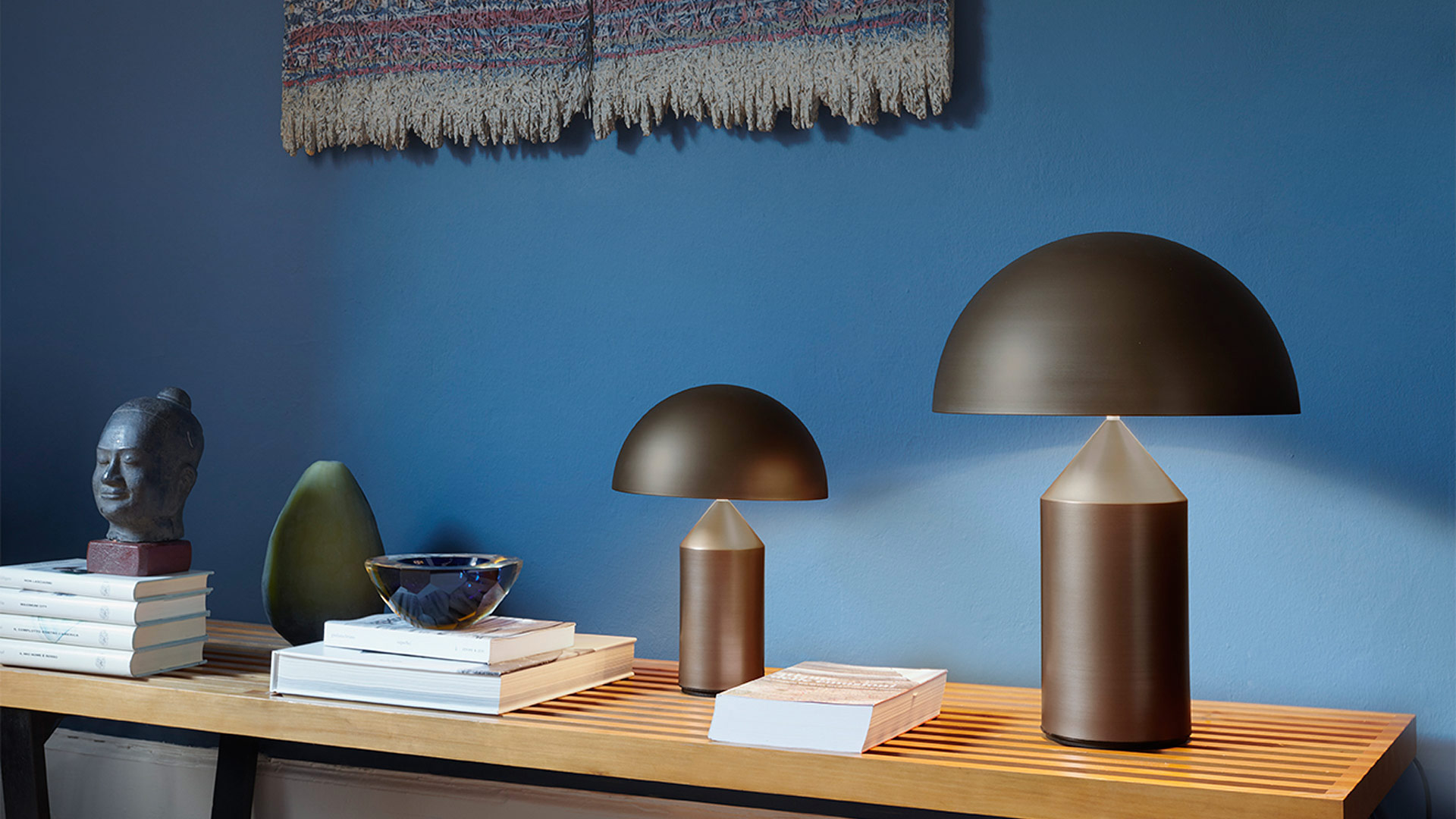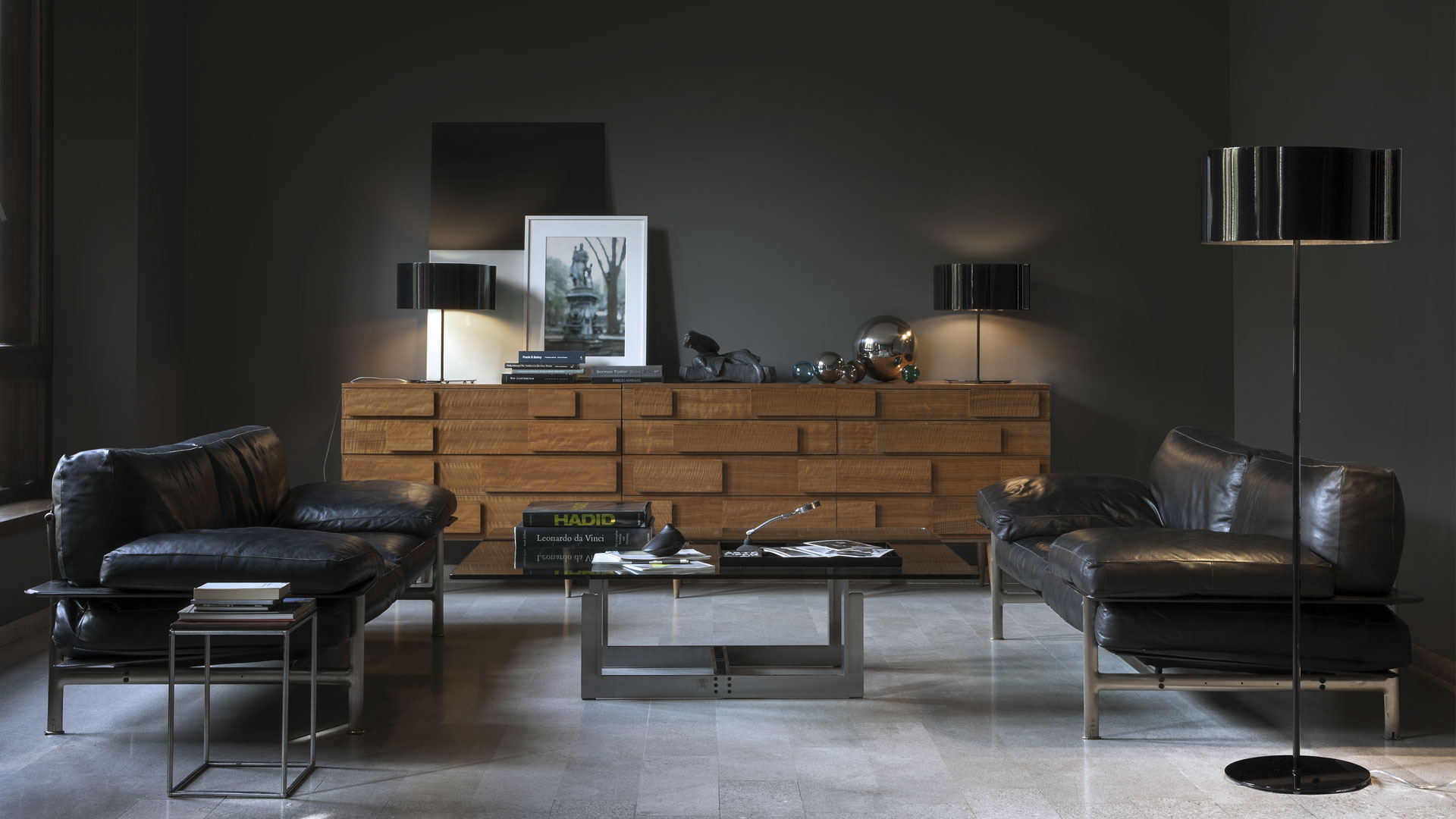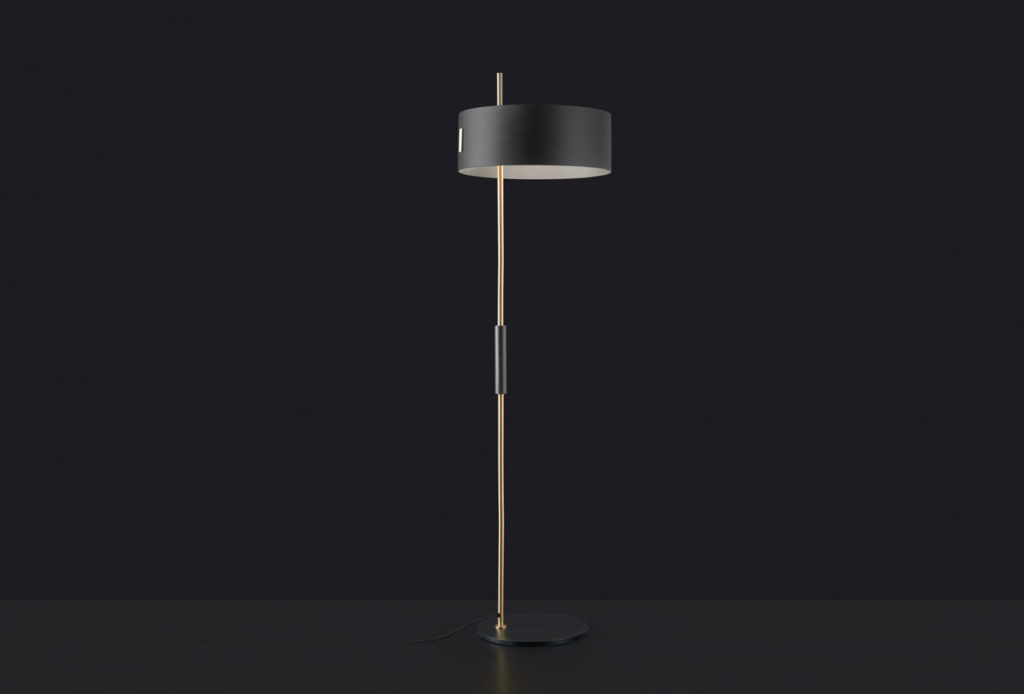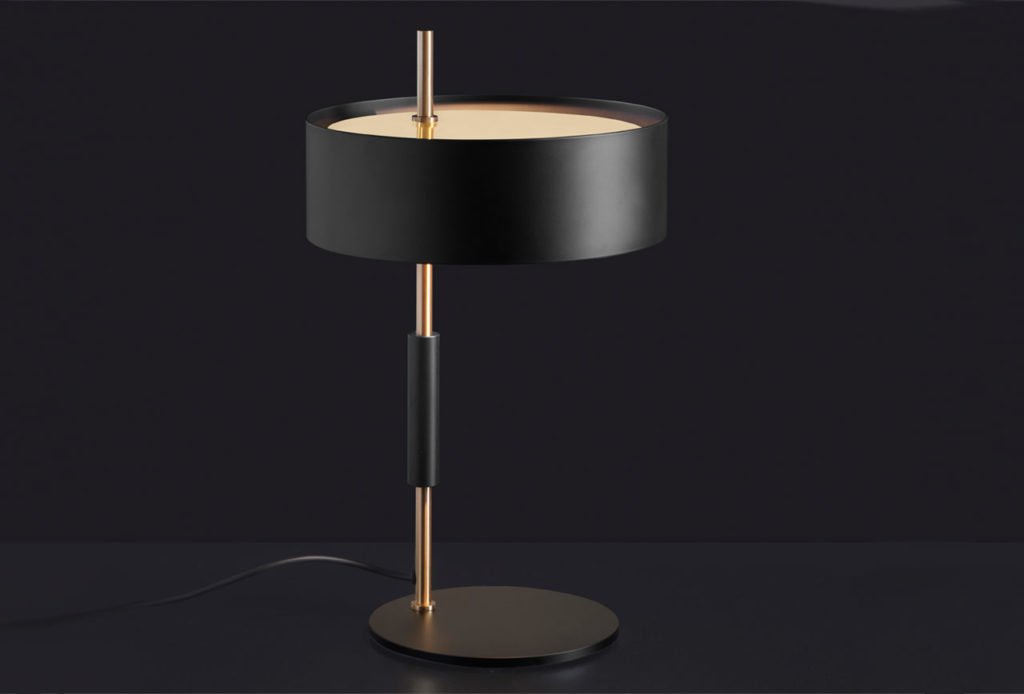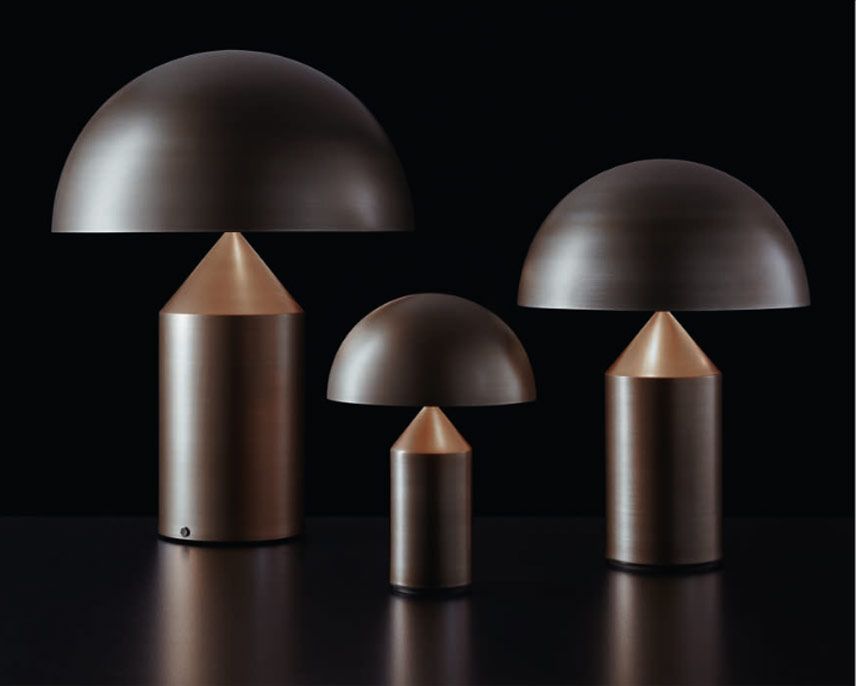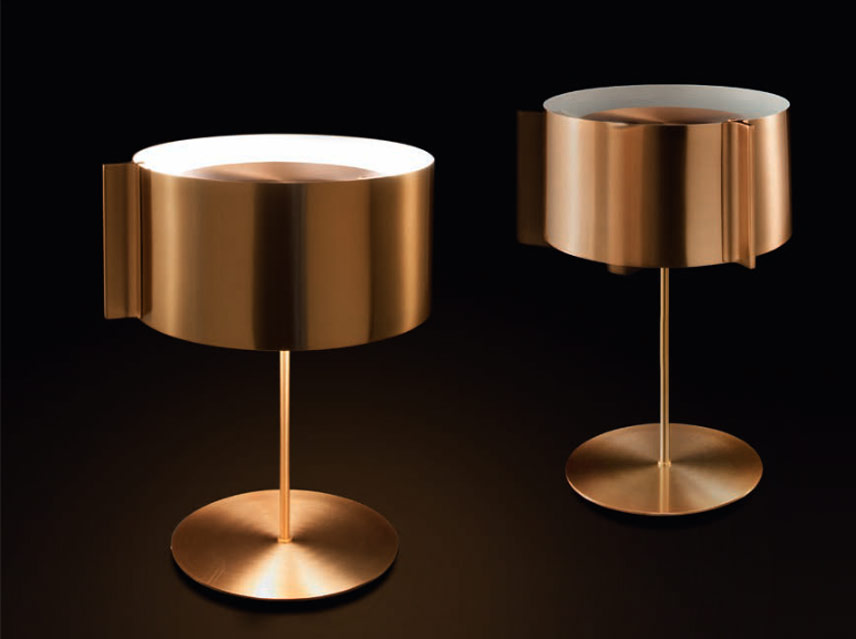Useful for creating a cosy, relaxed mood with soft, unobtrusive light, the shade is still today a key element in a lamp’s composition.
Over the course of its history, Oluce has reinterpreted the classic shade of the typical table lamp with creativity and technology, transforming it into a decorative and functional feature.
Its catalogue contains lamps designed by the most important designers in Italian and international history, who have interpreted the lampshade poetically and with skilful mastery. From the 1953 lamp, designed by Ostuni and Forti, in which the shade sits unexpectedly off-centre to the supporting stem, and the iconic Atollo by Vico Magistretti, where the shade is replaced by a perfect geometric hemisphere, to the Switch, designed by Nendo, whose shade functions as a switch to turn the lamp itself on and off.
The lamp 1953 designed by Ostuni & Forti, has two models, floor and table, varying in proportion and size but identical in their design which shifts the whole lampshade section from the centre to the side.
A range that elegantly recalls the style of those years, such as the use of a shade in the classic cylindrical shape and the fine contrast of the satin gold – stem and interior lens hood disc – against the black – the exterior and interior of the shade, the base and the stem grip.
Designed in 1977 by Vico Magistretti, over the years, Atollo has become the archetype of the table lamp, winning the Compasso d’Oro in 1979 and completely revolutionising the way we imagine the classic bedside lamp.
The geometric shapes that compose it – cylinder, cone and hemisphere – have resulted in a product that is decorative and essential at the same time, disconnected from the historical period and the fashions of the moment, and one that has now fully become one of the icons of Italian design.
By means of the Switch lamp, the Japanese designer Nendo, revisits the shape of the classic abat-jour by renewing both its materials and its function. The archetypal shape of the cylindrical lampshade is transformed by using metal while its function as a diffuser is combined with that of a ‘switch’, hence its name. In fact, the lamp is switched on and off by turning the sheet metal lampshade, inextricably blending shape and function, aesthetics and functionality.

